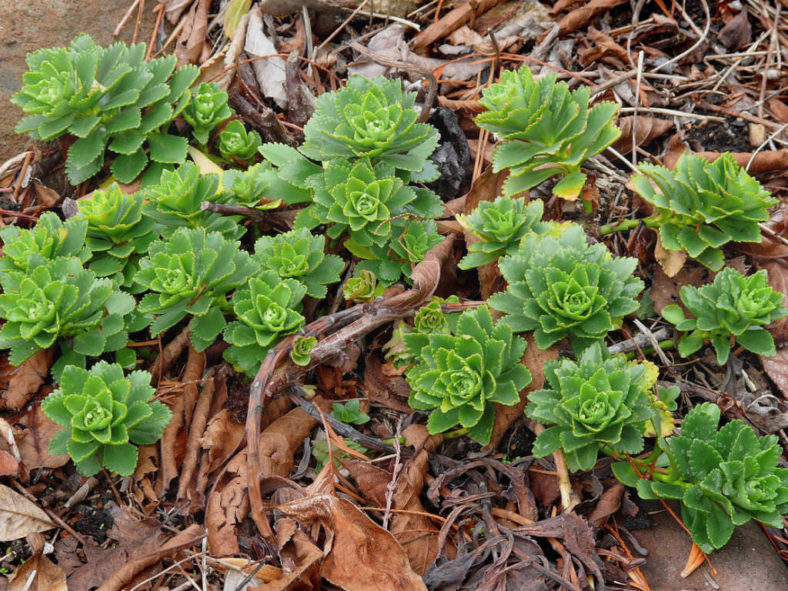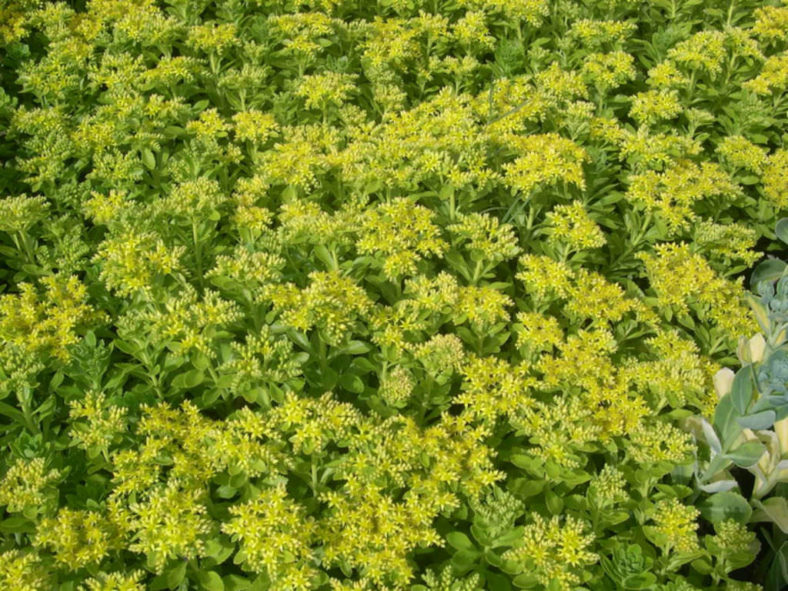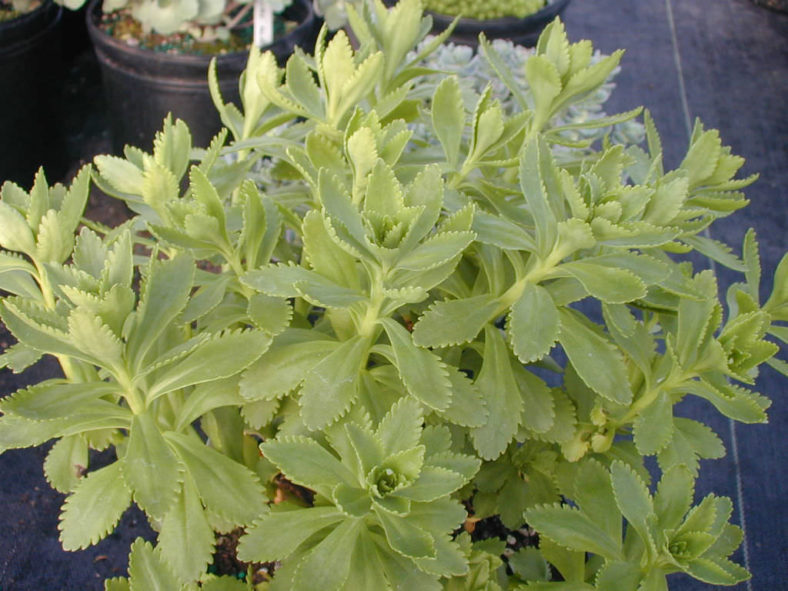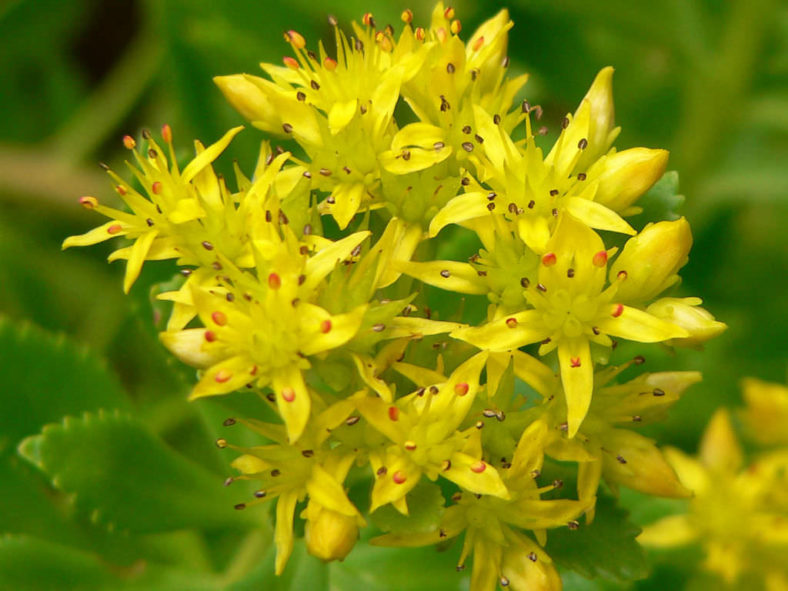Scientific Name
Phedimus takesimensis (Nakai) 't Hart
Accepted Scientific Name
Phedimus kamtschaticus (Fisch. & C. A. Mey.) H. 't Hart
Common Name(s)
Takeshima Stonecrop
Synonym(s)
Aizopsis takesimensis, Sedum kamtschaticum var. takesimense, Sedum takesimense
Scientific Classification
Family: Crassulaceae
Subfamily: Sempervivoideae
Tribe: Umbiliceae
Genus: Phedimus
Etymology
The specific epithet "takesimensis (tah-kes-ih-MEN-sis)" refers to Ulleungdo Island called Takeshima in Japan during the Edo period.
Origin
Phedimus takesimensis is native to South Korea. It occurs exclusively in Ulleungdo and Dokdo Islands.
Description
Phedimus takesimensis, formerly known as Sedum takesimense, is a succulent plant with woody rootstock and decumbent, sometimes caespitose stems that bear green leaves with serrated edges. The stems can grow up to 16 inches (40 cm) long. The basal rosettes persist throughout the winter months.
The flowers are star-shaped, yellow with reddish-yellow anthers, and appear in summer.
This species was synonymized with its continental progenitor species, Phedimus kamtschaticus. They have nearly identical foliage, flower color, and bloom time.

How to Grow and Care for Phedimus takesimensis
Light: These light-loving plants will tolerate light or partial shade but prefer full sun and grow best in warmer environments.
Soil: Phedimus thrive in any well-drained soil. Good drainage is critical for preventing root rot or fungal diseases.
Hardiness: Phedimus takesimensis can withstand temperatures as low as -30 to 40 °F (-34.4 to 4.4 °C), USDA hardiness zones 4a to 10b.
Watering: The best way to water your Phedimus is to use the "soak and dry" method. Get the soil completely wet, and then wait until the soil is dry before watering again.
Fertilizing: Feed with low-balanced fertilizer to keep your plants happy and healthy. Use a diluted dose of half the strength recommended on the package.
Repotting: Repot your plants when they outgrow their current pot by moving them to a larger container to hold the plant better.
Propagation: Phedimus can be grown from seeds, division, or stem cuttings.
Learn more at How to Grow and Care for Phedimus.
Toxicity of Phedimus takesimensis
Phedimus plants can be mildly toxic to humans and animals.
Cultivars
Links
- Back to genus Phedimus
- Succupedia: Browse succulents by Scientific Name, Common Name, Genus, Family, USDA Hardiness Zone, Origin, or cacti by Genus
Photo Gallery
Click on a photo to see a larger version.


